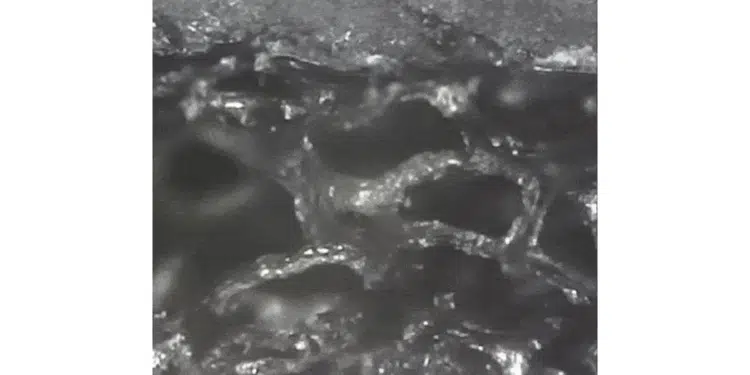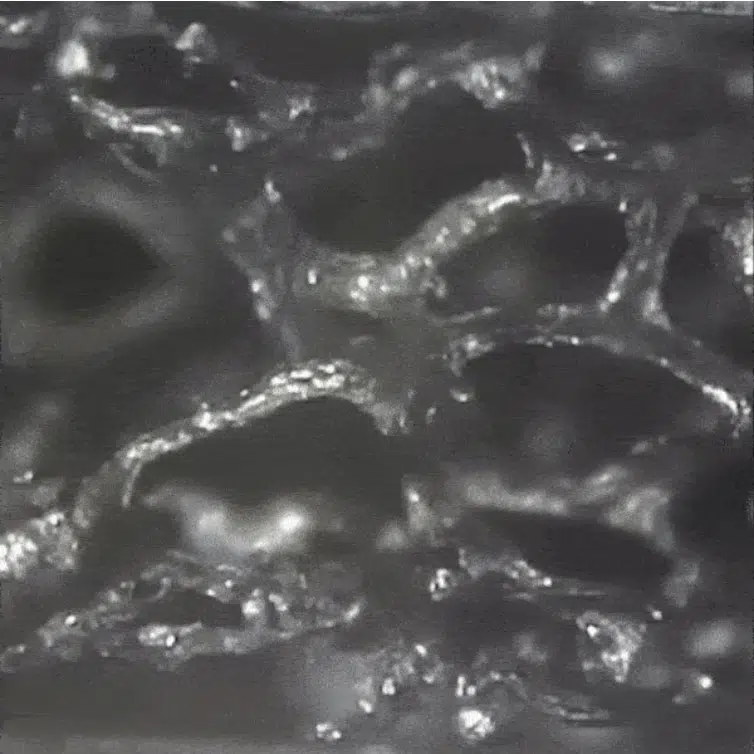Purdue University engineers have developed a “thermal switch” made up of compressible graphene foam, that dynamically adjusts to temperatures both inside and outside of electronic devices to maintain consistent thermal management.
“As electronic devices get smaller and more powerful, managing heat becomes a more crucial issue,” said Xiulin Ruan, professor of mechanical engineering, who studies nanoscale heat transfer and sustainable energy. “Most devices use passive thermal management, such as conduction and convection, to move excess heat. But this system isn’t tunable or adjustable, and doesn’t help at all in cold conditions.”
Other researchers have proposed various forms of thermal switches, which turn “on” to move heat away or turn “off” to keep the heat inside. But because these systems are either 100% on or 100% off, they lack the ability to variably adjust to changing temperatures, both inside and outside the device.
The solution came from postdoctoral researcher Tingting Du and master’s students Zixin Xiong and Luis Delgado, co-advised by Ruan and Amy Marconnet, associate professor of mechanical engineering, who studies the thermal properties of lithium ion batteries and other devices. They have developed a continuously tunable thermal switch based on compressible graphene composite foam.
Their work has been published in Nature Communications.
Graphene foam is a commercially available product, built from nanoscopic particles of carbon deposited in a specific pattern, with small voids of air in between. When the foam is uncompressed, it acts as an insulator, with the air pockets keeping the heat in place. But when the foam is physically compressed, the air escapes, and more heat is conducted out through the foam. Depending on how much the foam is compressed, the amount of heat transfer can be precisely dialed in.
The Purdue researchers measured the thermal conductance of the foam at Purdue’s Birck Nanotechnology Center. They sandwiched a 1.2-millimeter-thick sample of graphene foam in between a heater and heat sink, and placed the system under an infrared microscope to measure the temperature and heat flow. When fully compressing the foam to a thickness of 0.2 millimeters, the thermal conductance went up by a factor of 8. “It functions like a resistor in an electrical circuit,” said Marconnet. “Instead of varying the amount of current flow, it varies the amount of heat it allows to pass.”
They also conducted an experiment in a chamber at Purdue’s Flex Lab that can create specific environmental conditions, and achieved similar results with ambient temperatures from 0° C (32° F) to 30°C (86° F). They placed the graphene foam atop a heat source to simulate an electronic device, and used thermocouples to measure the temperature. “This is important, because the thermal switch adjusts to temperatures both inside and outside the device,” said Ruan. “When the ambient is very hot, our thermal switch can transfer heat out to cool the batteries down, and when the ambient is too cold, our thermal switch can turn off heat transfer to keep the batteries warm.”
While the experiment is just a proof-of-concept, this form of dynamic thermal management has potential applications beyond just cell phones. It could potentially be used in larger electronics, electric car batteries, space vehicles, and even biomedical devices. “Our goal is to use thermal switches to keep all of these devices functioning effectively in varying environments, and improve their overall energy efficiency,” said Ruan.



































